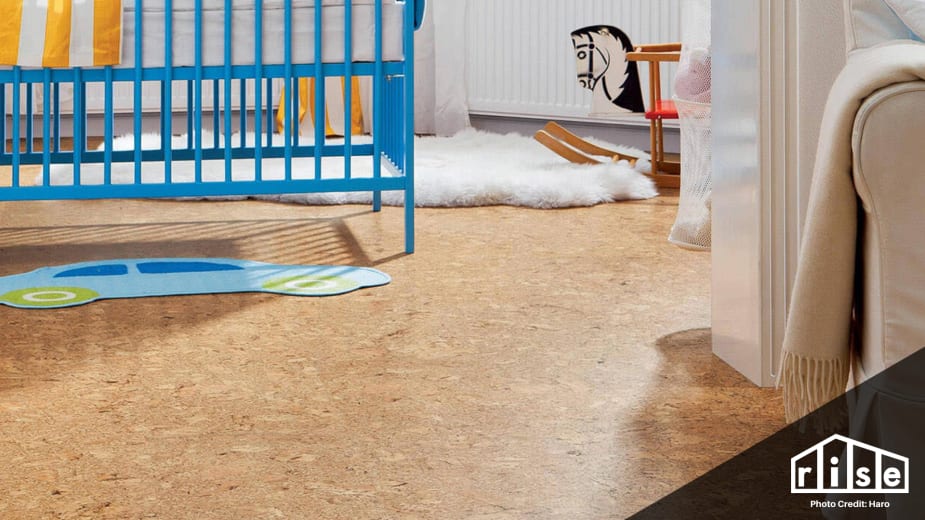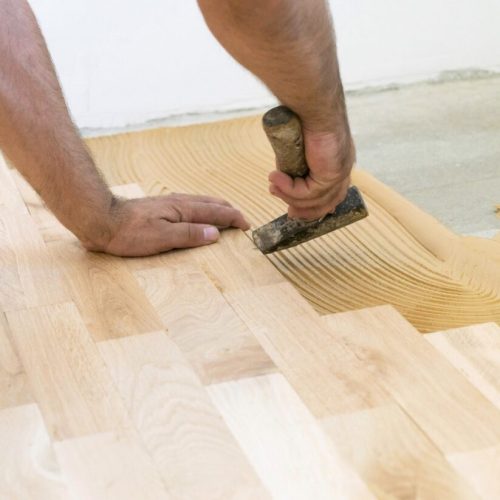Cork flooring has gained popularity recently due to its unique properties and eco-friendly nature. However, there have been concerns and misconceptions surrounding the presence of formaldehyde in cork flooring. This article will explore the truth behind these myths, shed light on the low VOC (Volatile Organic Compounds) nature of cork flooring, and highlight its numerous health benefits.
What is Cork Flooring?
Cork flooring is made from the bark of the cork oak tree, primarily found in Mediterranean countries such as Portugal and Spain. The bark is harvested without harming the tree, making cork flooring a sustainable and renewable material. It is known for its distinct appearance, featuring a natural texture with unique patterns and colors. Cork flooring offers a comfortable and resilient surface that is gentle on the feet and provides excellent insulation.
Debunking the Myth: Formaldehyde in Cork Flooring
One of the common myths surrounding cork flooring is the presence of formaldehyde, a chemical compound known for its potential health risks. However, it is important to note that formaldehyde is not an inherent component of cork or cork flooring. The misconception may stem from the fact that some flooring products, not specifically cork, have been found to contain formaldehyde.
The Low VOC Nature of Cork Flooring
Cork flooring is recognized for its low VOC emissions, including formaldehyde. VOCs are organic chemicals that can be released from certain materials and products, contributing to indoor air pollution. However, cork flooring has been tested and proven to have significantly low VOC emissions, making it a safe and healthy choice for residential and commercial spaces.
Health Benefits of Cork Flooring
Cork flooring offers a range of health benefits that contribute to a comfortable and safe living environment:
- Allergen resistance: Cork has natural properties that make it resistant to mold, mildew, and common allergens. This makes cork flooring an ideal choice for individuals with allergies or respiratory sensitivities.
- Soft and comfortable: The cushion-like texture of cork provides a comfortable surface to walk on, reducing strain on joints and minimizing the risk of foot fatigue.
- Sound absorption: Cork flooring has excellent sound-absorbing properties, reducing noise transmission between floors and creating a quieter living or working space.
- Thermal insulation: Cork’s cellular structure traps air pockets, providing effective thermal insulation. This helps maintain a comfortable temperature and can contribute to energy savings.

Sustainable and Eco-Friendly Choice
Cork flooring is environmentally friendly for those seeking sustainable materials for their homes or businesses. Here are some reasons why cork flooring is considered eco-friendly:
- Renewable resource: The cork oak tree is not cut down during harvesting. The bark regenerates, allowing for continuous and sustainable production of cork flooring.
- Carbon sequestration: Cork oak trees absorb large amounts of carbon dioxide from the atmosphere, helping to mitigate climate change and reduce greenhouse gas emissions.
- Minimal waste: Cork production generates minimal waste as all parts of the bark are utilized. Leftover cork can be used for other purposes, such as insulation or crafts.
Cork flooring is a versatile and sustainable option that offers numerous benefits for your home or commercial space. By debunking the formaldehyde myth in cork flooring and highlighting its low VOC nature, we can confidently embrace this eco-friendly flooring solution. Enjoy the comfort, health benefits, and environmental advantages of cork flooring while adding a touch of natural beauty to your space. Choose cork flooring and experience a truly sustainable and stylish flooring option.
DIY Cork Flooring – Pros, Cons u0026 Green Installation Guide for LEED
Why Homeowners Love Their Natural Cork Floors
The Benefits of Cork Flooring
Guide to Non-Toxic Flooring 2022 – My Chemical-Free House
Autumn Ripple – 5/16 Inch (8mm) – Cork Tile Glue Down (Floor and Wall)
5 Key Points Buyers Guide For Best Cork Flooring
Waterproof Cork Flooring – Wood Look
Guide to Non-Toxic Flooring 2022 – My Chemical-Free House
Non-Toxic Laminate Flooring 101 + Brands to Look For FlooringStores
Related Posts:
- Cork Flooring For Dogs
- Cork Flooring Design
- White Washed Cork Floor
- How To Clean Cork Floor
- How To Finish Cork Flooring
- Cork Flooring Refinishing
- How To Seal Cork Flooring
- Installing Cork Flooring In A Bathroom
- Cork Floor Tiles For Kitchen
- Finishing Cork Flooring
Cork Flooring Formaldehyde: Everything You Need To Know
Formaldehyde is a colorless, odorless gas that can have serious health effects if it is released in high concentrations. It is used in the manufacturing of many products, including cork flooring. But how much formaldehyde is found in cork flooring, and what health risks does it pose? In this article, we’ll explore the answers to these questions and provide some tips on how to reduce your exposure to formaldehyde from cork flooring.
What is Formaldehyde?
Formaldehyde is a colorless, odorless gas that can have serious health effects if it is released in high concentrations. It is used in the manufacturing of many products, including plywood, particleboard, and cork flooring. Formaldehyde has been classified as a probable human carcinogen by the International Agency for Research on Cancer (IARC). It can also cause eye, nose, and throat irritation; coughing; wheezing; nausea; and skin irritation.
How Much Formaldehyde Is Found in Cork Flooring?
The amount of formaldehyde found in cork flooring varies depending on the type of product and the manufacturer. Generally speaking, most cork flooring products contain low levels of formaldehyde, typically below 0.1 parts per million (ppm). Some products may contain higher amounts, up to 0.5 ppm, but these are rare. To put this into perspective, the Environmental Protection Agency (EPA) recommends that indoor air contain no more than 0.1 ppm of formaldehyde.
What Are The Health Risks of Formaldehyde in Cork Flooring?
The health risks posed by formaldehyde in cork flooring are generally minimal, since most products contain low levels of this chemical. However, it is still important to take precautions to limit your exposure. The EPA recommends that you open windows or use fans to increase ventilation when installing or cleaning cork flooring. You should also avoid breathing in dust created during installation or cleaning processes.
What Precautions Should I Take To Reduce My Exposure To Formaldehyde From Cork Flooring?
In addition to increasing ventilation during installation and cleaning processes, there are some other steps you can take to reduce your exposure to formaldehyde from cork flooring:
• Choose low-emitting products – Choose cork flooring products with low levels of formaldehyde emissions, such as those labeled as “low-emitting” or “no-added formaldehyde” by the manufacturer.
• Avoid heat and humidity – High temperatures and humidity can cause formaldehyde emissions from cork flooring to increase, so avoid using such conditions when installing or cleaning cork flooring.
• Regularly clean – Regularly dust mop and vacuum your floors to remove any dust or dirt that may be trapped in the cork material, which can release formaldehyde over time.
• Use sealant – If possible, use a sealant on your cork floors after installation to reduce the amount of formaldehyde emissions from the material.
• Use air purifier – Using an air purifier with a HEPA filter can help reduce levels of airborne particles like dust and dirt that may contain formaldehyde.
FAQs About Cork Flooring Formaldehyde
Q: Is cork flooring safe?
A: Most cork flooring products contain low levels of formaldehyde and pose minimal health risks. However, it is still important to take precautions to limit your exposure by increasing ventilation during installation and cleaning processes and avoiding high temperatures and humidity conditions when installing or cleaning cork flooring.
Q: Is there a way to test for formaldehyde levels in cork flooring?
A: Yes, there are test kits available that can measure the levels of formaldehyde in your home or office environment. These test kits typically come with instructions on how to use them properly so that you get accurate results.
Q: How do I reduce my exposure to formaldehyde from cork flooring?
A: In addition to increasing ventilation during installation and cleaning processes, you should also choose low-em







